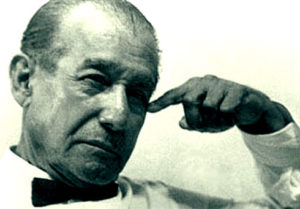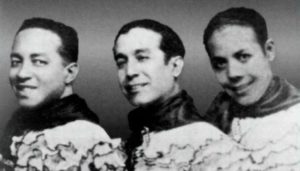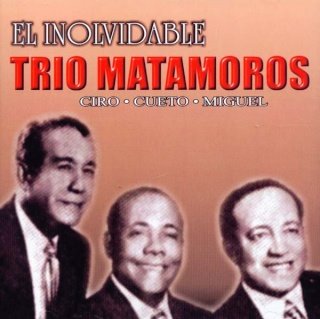 MIGUEL MATAMOROS, A GUITAR, AN ARMONICA AND HIS PASSION FOR THE CUBAN MUSIC.
MIGUEL MATAMOROS, A GUITAR, AN ARMONICA AND HIS PASSION FOR THE CUBAN MUSIC.
On May 8, but in 1894, in the popular Santiago neighborhood of Los Hoyos, a man was born who through his hectic life transpiro cubanía, bolero and son; that day he witnessed the birth of Miguel Matamoros; 31 years later, on May 8, 1925, he founded the Matamoros Trio, a group with which he left his indelible mark on the history of music.
Self-taught, but with a natural talent, simple and intuitive, Matamoros dabbled in almost all the genres and rhythms of Cuban popular music, after having practiced multiple trades in his early youth as a driver, carpenter, church altar boy, slab maker or potter.
However, it was the guitar, the harmonica and the love for music, the passions to which he gave himself body and soul with absolute genius and dexterity. According to the specialists, Matamoros had great qualities as a singer, he could easily give a high-pitched sound and interpret his songs with grace and a rich Cuban flavor.
As a composer, his melodies are simple and beautiful. In 1910, with 16 years of age, he composed his first musical piece: the bolero The Council. Since then and throughout his prolific life, Matamoros composed about 200 works of different genres: pasodoble, habanera, polka, bolero and son, among others.
In 1925, Miguel Matamoros founded with Siro Rodríguez and Rafael Cueto the legendary and popular group Trío Matamoros and made their first recording on record three years later. Together they created anthological themes that contain freshness, simplicity and flavor.
The trio is an obligatory reference in the history of Cuban music and among its most significant contributions is the masterful way in which the genres of bolero and son were fused.
As the crowning piece of this union was born ‘Lágrimas Negras’, a theme that has become a classic of all times. It was one of the first boleros-they are written and their music represents the Cuban idiosyncrasy. Worldly known and versioned, Lágrimas negras has marked a milestone in the musical history of the Island and the region.
With their peculiar way of interpreting music they achieved great popularity inside and outside of Cuba and their compositions became danceable hits.
Of his long list of hits include ‘Promise’, ‘Juramento’, ‘Olvido’, ‘Dulce Embeleso’, ‘Elíxir de la Vida’, ‘El trío y el ciclón’, ‘La mujer de Antonio’ and ‘Mamá es de the hill ‘. Many of these songs continue in the preference of music lovers from all over the planet.
But Matamoros not only wrote for the trio. Thanks to the fame he achieved, the Conjunto Matamoros was born, which included the trumpet and where he had great voices such as Benny Moré and Compay Segundo. Until the end of his days this illustrious son of Santiago de Cuba transpired cubanía, bolero and son.
 MIGUEL MATAMOROS, UNA GUITARRA, LA ARMÓNICA Y SU PASIÓN POR LA MÚSICA CUBANA.
MIGUEL MATAMOROS, UNA GUITARRA, LA ARMÓNICA Y SU PASIÓN POR LA MÚSICA CUBANA.
El 8 de mayo pero de 1894 en el popular barrio santiaguero de Los Hoyos nació un hombre que a través de su agitada vida transpiro cubanía, bolero y son; ese dia fue testigo del nacimiento de Miguel Matamoros; 31 años más tarde, el 8 de mayo de 1925, funda el Trío Matamoros, conjunto con el que deja su huella indeleble en la historia de la música.
De formación autodidacta, pero de talento natural, sencillo e intuitivo, Matamoros incursionó en casi todos los géneros y ritmos de la música popular cubana, luego de haber ejercido múltiples oficios en su temprana juventud como chofer, carpintero, monaguillo de iglesia, fabricante de losas o alfarero.
Sin embargo, fueron la guitarra, la armónica y el amor por la música las pasiones a las que se entregó en cuerpo y alma con una genialidad y destreza absolutas. Según refieren los especialistas, Matamoros poseía grandes cualidades como cantante, podía dar un la agudo con facilidad e interpretar sus temas con gracia y un rico sabor cubano.
Trio Manjuari interpreta “Son de la Loma”
Como compositor, sus melodías son sencillas y bellas. En 1910, con 16 años de edad, compuso su primera pieza musical: el bolero El Consejo. Desde entonces y a lo largo de su prolífera vida, Matamoros compuso unas 200 obras de diferentes géneros: pasodoble, habanera, polka, bolero y son, entre otros.
En 1925, Miguel Matamoros fundó con Siro Rodríguez y Rafael Cueto la legendaria y popular agrupación Trío Matamoros y realizan su primera grabación en disco tres años más tarde. Juntos crearon temas antológicos que encierran frescura, sencillez y sabrosura.
El trío constituye una referencia obligada en la historia de la música cubana y entre sus aportes más significativos se encuentra la forma magistral en que fusionaron los géneros del bolero y el son.
https://youtu.be/EwVrD_0wy3U
“Lucrecia” interpreta “Lagrimas Negras”
Como pieza cumbre de esta unión nació ‘Lágrimas Negras’, un tema que se ha convertido en un clásico de todos los tiempos. Fue uno de los primeros boleros-son escritos y su música representa la idiosincrasia cubana. Mundialmente conocido y versionado, Lágrimas negras ha marcado un hito en la historia musical de la Isla y de la región.
Con su manera peculiar de interpretar la música lograron gran popularidad dentro y fuera de Cuba y sus composiciones se convirtieron éxitos bailables.
https://youtu.be/q4XbXlSkps4
Roberto Torres Interpreta “La Mujer de Antonio”.
De su larga lista de hits destacan ‘Promesa’, ‘Juramento’, ‘Olvido’, ‘Dulce embeleso’, ‘Elíxir de la vida’, ‘El trío y el ciclón’, ‘La mujer de Antonio’ y ‘Mamá son de la loma’. Muchas de estas canciones continúan en la preferencia de melómanos de todo el planeta.
Pero Matamoros no solo escribió para el trío. Gracias a la fama que alcanzó nació luego el Conjunto Matamoros, en el cual incluyó la trompeta y donde contó con voces geniales como la del Benny Moré y Compay Segundo. Hasta el fin de sus días este hijo ilustre de Santiago de Cuba transpiró cubanía, bolero y son.
Agencies/RadioEnciclop/Olga Díaz/Internet Photos/YouTube/ Arnoldo Varona/ TheCubanHistory.com
THE CUBAN HISTORY, HOLLYWOOD.





